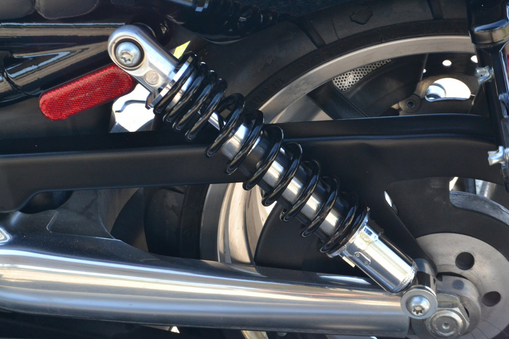Everything You Need to Know About Hydraulic Cylinders and Their Impact on the Industrial Marketplace
Hydraulic cylinders are devices that convert fluid pressure into linear force and motion. They are widely used in various industries, including construction, agriculture, manufacturing, and many others. Here is everything you need to know about hydraulic cylinders and their impact on the industrial marketplace.
A Brief Overview of What is a Hydraulic Cylinder & How it Works
What is a Hydraulic Cylinder?
A hydraulic cylinder is a mechanical actuator that converts fluid pressure into linear force and motion. It consists of a cylinder body, piston, rod, seals, and other components. The cylinder body is a cylindrical tube that contains the fluid and the piston, which moves inside the cylinder body. The piston rod is connected to the piston and extends out of the cylinder body, transmitting the linear force generated by the piston.
In a hydraulic cylinder system, high-pressure hydraulic fluid is supplied to one end of the cylinder, causing the piston to move. The movement of the piston is transmitted through the piston rod, resulting in linear force and motion. Hydraulic cylinders are commonly used in various industrial applications, including material handling, machine tools, construction, and mobile equipment, among others. They offer several advantages, such as high force output, smooth and precise motion, ease of control, and durability, making them a reliable and efficient solution for many industrial applications.
How do hydraulic cylinders work?
Hydraulic cylinders work on the principle of Pascal's Law, which states that pressure applied to a confined fluid is transmitted equally in all directions. In a hydraulic cylinder, a piston moves inside a cylinder body, driven by high-pressure hydraulic fluid. As the fluid pushes the piston, it generates linear force and motion.
Types of Hydraulic Cylinders & Their Uses in the Industry
There are several types of hydraulic cylinders, including single-acting, double-acting, tie-rod, and telescopic cylinders. Single-acting cylinders use fluid pressure to move the piston in one direction, while double-acting cylinders use fluid pressure to move the piston in both directions. Tie-rod cylinders are commonly used in heavy-duty applications and are designed with a tie-rod assembly for added strength. Telescopic cylinders have multiple sections that telescope into each other to provide longer strokes.
- Single-Acting Cylinders: Single-acting cylinders use fluid pressure to move the piston in one direction. They are commonly used in applications where the load only needs to be moved in one direction, such as in material handling and construction equipment.
- Double-Acting Cylinders: Double-acting cylinders use fluid pressure to move the piston in both directions. They are commonly used in applications where the load needs to be moved in both directions, such as in machine tools and mobile equipment.
- Tie-Rod Cylinders: Tie-rod cylinders are designed with a tie-rod assembly for added strength. They are commonly used in heavy-duty applications, such as in construction equipment and mining.
- Telescopic Cylinders: Telescopic cylinders have multiple sections that telescope into each other to provide longer strokes. They are commonly used in applications where a longer stroke is needed, such as in boom lifts and dump trucks.
- Mill-Type Cylinders: Mill-type cylinders are designed for heavy-duty industrial applications and are commonly used in steel mills and other metalworking applications.
- Rotary Actuators: Rotary actuators are hydraulic cylinders that provide rotary motion, rather than linear motion. They are commonly used in applications where rotary motion is needed, such as in valve control and material handling equipment.
In the industrial environment, hydraulic cylinders are used in a wide range of applications, including material handling, machine tools, construction equipment, mobile equipment, and many others. They provide reliable and efficient solutions for applications that require high force output, smooth and precise motion, ease of control, and durability. The versatility of hydraulic cylinders allows them to be used in a variety of applications, making them a popular choice for many industries.
The Advantages of Using Hydraulic Cylinders in the Industrial Environment
Hydraulic cylinders offer several advantages, including high force output, high speed, smooth and precise motion, and ease of control. They also require less maintenance than other types of actuators and can withstand harsh operating conditions.
- High Force Output: Hydraulic cylinders are capable of producing very high force output, making them suitable for heavy-duty applications. This is because hydraulic fluid can be pressurized to much higher levels than other types of fluids, resulting in higher force output.
- Smooth and Precise Motion: Hydraulic cylinders provide smooth and precise motion, which is important for many industrial applications where accuracy is crucial. This is because the fluid flow in hydraulic systems is continuous, resulting in smooth and consistent motion.
- Ease of Control: Hydraulic cylinders can be easily controlled using hydraulic valves, which allow for precise control of fluid flow and pressure. This makes hydraulic cylinders ideal for applications where precise control is needed, such as material handling and machine tools.
- Durability: Hydraulic cylinders are designed to withstand harsh operating conditions and are often used in heavy-duty applications. They are made from high-quality materials, such as steel, and are designed to provide long-lasting performance.
- Energy Efficiency: Hydraulic systems are energy-efficient, as the energy stored in the fluid can be used multiple times. This makes hydraulic cylinders a more efficient solution for many industrial applications than other types of actuators.
- Versatility: Hydraulic cylinders come in a variety of sizes and configurations, making them suitable for a wide range of applications. This versatility makes them a popular choice for many industrial applications.
Applications of hydraulic cylinders
Hydraulic cylinders are used in a wide range of industrial applications, including material handling, machine tools, mining, and many others. They are also commonly used in mobile equipment, such as excavators, backhoes, and cranes, where they are used to control the movement of booms and arms.
Material Handling: Hydraulic cylinders are used in material handling equipment, such as forklifts, cranes, and hoists, to lift and move heavy loads.
- Machine Tools: Hydraulic cylinders are used in machine tools, such as press brakes, shears, and punches, to provide the high force needed for metalworking and fabrication applications.
- Construction Equipment: Hydraulic cylinders are used in construction equipment, such as bulldozers, excavators, and backhoes, to provide the power and control needed for earth-moving and construction tasks.
- Mobile Equipment: Hydraulic cylinders are used in mobile equipment, such as dump trucks, garbage trucks, and fire trucks, to control and power various functions, such as lifting and dumping.
- Agricultural Equipment: Hydraulic cylinders are used in agricultural equipment, such as tractors, harvesters, and plows, to provide the power and control needed for various farming and harvesting tasks.
- Manufacturing Processes: Hydraulic cylinders are used in various manufacturing processes, such as stamping, forging, and injection molding, to provide the high force needed for these processes.
- Aerospace and Defense: Hydraulic cylinders are used in aerospace and defense applications, such as aircraft landing gear and military vehicles, to provide the power and control needed for these demanding applications.
- Marine Equipment: Hydraulic cylinders are used in marine equipment, such as ship cranes and winches, to provide the power and control needed for various maritime tasks.
These are just a few examples of the many applications of hydraulic cylinders. They provide reliable and efficient solutions for applications that require high force output, smooth and precise motion, ease of control, and durability. The versatility of hydraulic cylinders allows them to be used in a variety of applications, making them a popular choice for many industries.
Impact on the industrial marketplace
Hydraulic cylinders have had a significant impact on the industrial marketplace, as they provide a reliable, efficient, and cost-effective solution for a variety of applications. They have allowed for the development of new technologies and the improvement of existing ones, leading to increased productivity and competitiveness in various industries. The hydraulic cylinder market is expected to continue growing, driven by the increasing demand for automation and the need for improved efficiency in industrial processes.
Factors That Affect Performance When Using Hydraulic Cylinders
Fluid Properties: The type of fluid used in the hydraulic system can greatly impact the performance of the cylinder. Factors such as fluid viscosity, temperature, and contamination can all affect the performance of the cylinder.
System Pressure: The pressure in the hydraulic system can greatly affect the performance of the cylinder. High system pressure can result in increased cylinder speed and force, but can also increase the risk of cylinder damage. Low system pressure can result in decreased cylinder speed and force, and can also result in reduced system efficiency.
Cylinder Design: The design of the hydraulic cylinder can greatly affect its performance. Factors such as cylinder size, rod diameter, and type of seals used can all impact the performance of the cylinder.
Load Type: The type of load being moved by the hydraulic cylinder can greatly affect its performance. Factors such as weight, size, and stability of the load can all impact the performance of the cylinder.
Operating Environment: The operating environment of the hydraulic cylinder can also impact its performance. Factors such as temperature, humidity, and exposure to corrosive or abrasive substances can all affect the performance of the cylinder.
Maintenance: Regular maintenance of the hydraulic cylinder is crucial for maintaining its performance. Factors such as proper fluid replacement, checking for leaks and contaminants, and regularly lubricating moving parts can all impact the performance of the cylinder.
The Application of Different Types Of Hydraulic Cylinders Across Industries
Different types of hydraulic cylinders have specific strengths and are used in various industries for specific applications. Some examples include:
Tie-Rod Cylinders: Tie-rod cylinders are commonly used in the manufacturing and material handling industries for applications requiring moderate to high force. They are often used in machinery such as presses, cranes, and conveyors.
Welded Body Cylinders: Welded body cylinders are commonly used in the construction, mining, and heavy-duty equipment industries for applications requiring high force and durability. They are often used in equipment such as excavators, bulldozers, and dump trucks.
Mill-Type Cylinders: Mill-type cylinders are commonly used in the steel, aluminum, and paper industries for applications requiring high force and stability. They are often used in machinery such as rolling mills, forging presses, and calenders.
Telescopic Cylinders: Telescopic cylinders are commonly used in the material handling and transportation industries for applications requiring long stroke length and high lift capability. They are often used in equipment such as cranes, boom trucks, and trailer-mounted equipment.
Compact Cylinders: Compact cylinders are commonly used in the packaging, food processing, and pharmaceutical industries for applications requiring compact design and high precision. They are often used in machinery such as filling machines, labeling machines, and packaging equipment.
Rotary Actuators: Rotary actuators are commonly used in the automotive, aerospace, and marine industries for applications requiring rotary motion and high torque. They are often used in equipment such as steerable landing gear, ship rudders, and satellite deployment mechanisms.

